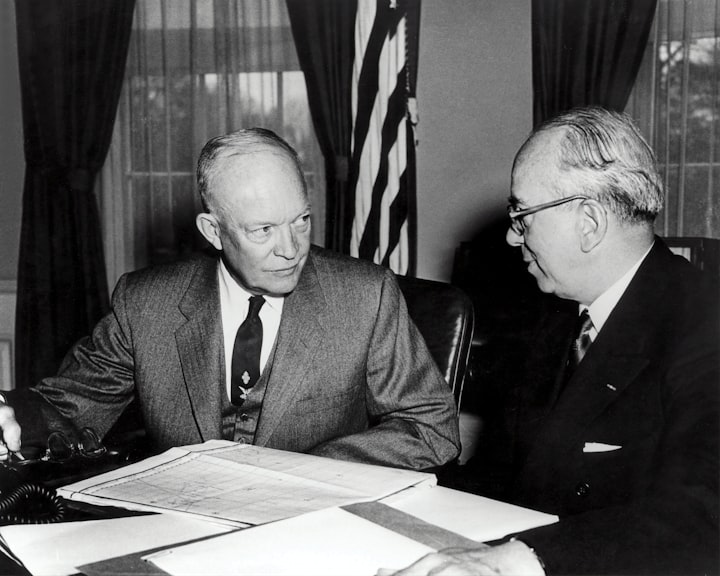Eisenhower, statistics, and business continuity
Challenging our assumptions when creating disaster plans

This morning, my supervisor sent us an email with the following quote, “Plans are worthless, but planning is everything.” The quote, found on Quote Investigator, attributed the foundation of this message to Dwight D. Eisenhower, explaining that “rigid, premade plans were often useless in conflict. It is the practice of developing plans, and backup plans, and exploring all the options that is of greatest value.” While Eisenhower was referring to war, and my supervisor was referring to software testing, my mind goes to my grad school days where we talked about disaster planning.
I could immediately jump to talking about 2020 and disaster planning, but first I want to mention my undergrad statistics class. Math had always been a strong subject for me, I was even on the Math Team all four years of high school (captain for 2 of those years); don’t @ me. While I was great at math, I soon learned that statistics isn’t math and I really struggled with it, however one of the things I remember was the same question at the end of each assignment and test. This, I feel, shaped not only how I thought about how we use information we have, but also to reevaluate the way we view information, the way we present it to others and the way others view the same information. The question: What assumptions are being made? List at least 3.
Now, being a little goofy, but also trying to incorporate my foreign language major in a class that I felt was only somewhat relevant to my chosen area of study, I would list off some of --what I felt were--the most basic assumptions.
- It is assumed that the person working with this data knows the language it is being presented in.
- It is assumed that the data is being presented in a format that they are able to access. For instance, if someone has vision issues, it is made available in audio or possibly even Braille; if someone is attending a lecture on this topic and hard of hearing, that material is made available to them in a written format.
- It is assumed that the individual is knowledgeable regarding the items and subject matter than the statistics are talking about and can appropriately apply conversions and interactions where applicable.
I could use these on every test. The type of answers I think the professor was actually looking for had to do the specific interactions in point #3; what specific interactions from the tests in the questions had referenced? If we had been talking about computers and data transfer rates, one of the assumptions would be: It is assumed that 8 bits equals one byte.
Turning back to the planning, when we plan something, there are many assumptions we make. There are expectations that things will go a certain way and when they do, we can follow our plan. However, disaster planning is the exercise in determining some catastrophic things that are unlikely, but still possible, to happen and the steps an organization would have to take in order to pivot and continue functioning. Disaster planning and business continuity plans are often created at the beginning of a business’ inception as required by investors, but not often revisited. In September of 2020, had someone suggested a disaster plan for a pandemic, in most organizations I had been involved with, I feel like the rest of the team would have rolled their eyes, much like I imagined my statistics professor rolling his eyes when he read my papers.
For the last 10 years, I have worked in some highly technical environments. This made that pivot from working in the office to working from home relatively easy, as I was already familiar with concepts such as data encryption, VPNs, and networking that I could apply at a home-use level. I know there are many companies that struggled with that transition. I wonder to what extent their disaster planning extended. As the person who brought up earthquakes while working in Wisconsin and experienced some eye-rolling, the occurrence of an ice-quake in Madison and an earthquake felt by colleagues while at a conference in Kansas made my suggestion much less far-fetched.
This is exactly the type of “act of planning” that Eisenhower is saying is important. While my colleagues may have thought it silly at the time, even though it was pointed out that some of us may, in fact, end up working in California, we did go through the exercise. What were the considerations? How could we contact employees? Where was a safe spot to reconvene with business critical data? Who was responsible for gathering that critical data? Sometimes, even just the act of thinking through a scenario and not creating an official, written plan, but jotting down some notes can provide a tiny bit of framework for some of those crazy, far-fetched, completely unexpected events. Like a pandemic in the 21st century.
About the Creator
Rachel Pieper Decker
Displaced Minnesotan in Southern California.
Gamer, streamer, fiber arts enthusiast, Web3 dabbler, aspiring Notary Public
Connect with me: twitter.com/HyperZenGirl * twitch.tv/HyperZenGirl
Affiliate links: https://linktr.ee/HyperZen






Comments
There are no comments for this story
Be the first to respond and start the conversation.